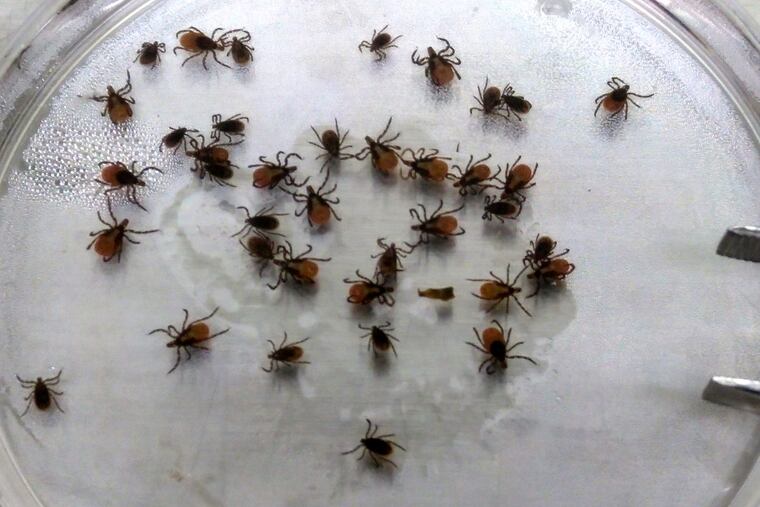Find a tick on your dog, your child, or your shirt? Send it to Drexel
This lab wants to collect hundreds of ticks and test them for bacteria that cause illness, such as Lyme disease and others that may be unknown to science.

So far as he knows, Garth Ehrlich has never been bitten by a tick.
"They don't seem to like me," he said.
But for those who are not so lucky, Ehrlich has a request: Mail the pest to him in a plastic bag.
Ehrlich, a professor of microbiology and immunology at Drexel University's College of Medicine, is on a quest to identify which ticks are spreading disease, and where.
Scientists already have a pretty good idea where to find ticks that carry the bacteria that cause Lyme disease. Pennsylvania and New Jersey, in particular, are hot spots — posing a risk for both for humans and dogs.
But ticks are known to harbor a variety of other pathogens, some of which have not been well-studied. Anyone who sends in a tick to Ehrlich's lab is asked to fill out a form indicating when and where the tick was found, so that he and colleagues can map out trouble spots.
"We'll take them from anywhere," he said. "Savvy physicians could then say, in this or that region, 'I know if somebody comes in with a tick bite, I should know to be looking for Lyme disease, or I should monitor them for, say, Bartonella or Coxiella.'"
Diseases caused by various species of Bartonella bacteria include cat-scratch disease and trench fever, according to the U.S. Centers for Disease Control and Prevention. Coxiella bacteria can cause a disease called Q fever, though transmission is thought to occur more often through inhalation, not tick bites.
Ehrlich already had received ticks from academic collaborators, including some at Pennsylvania State University, when graduate student Kayla Socarras suggested accelerating the process by asking the public for help.
The lab will take ticks that bit someone and also those that were simply plucked off clothing.
The scientists use advanced genetic sequencing to analyze the microbiome of each creature, Ehrlich said. The goal is to cast a wide net, avoiding any bias that might arise from looking for particular types of bacteria.
"We don't look for specific organisms," Ehrlich said. "Our test will identify essentially any bacteria that's there."
If you come across a tick, place it in a small Ziploc bag with a moist cotton ball or paper towel to keep any bacteria alive. Even a wet blade of grass will do. (The tick, on the other hand, is better off dead. The U.S. Post Office has special requirements for mailing live animals.)
Drop it in a padded envelope, along with the completed form, which can be found here:
Mail to the following address:
Carol Hope, Drexel University Center for Advanced Microbial Processing, New College Building, 245 N. 15th St., Room 17113, Philadelphia 19101.
And when walking in the woods, wear long pants to avoid getting bitten.